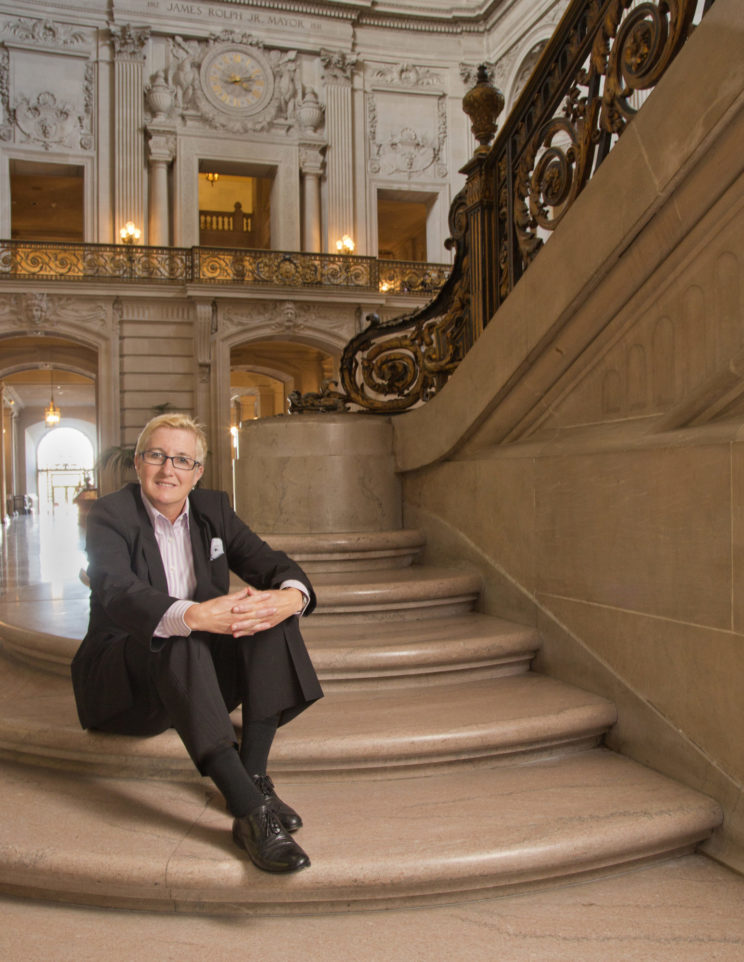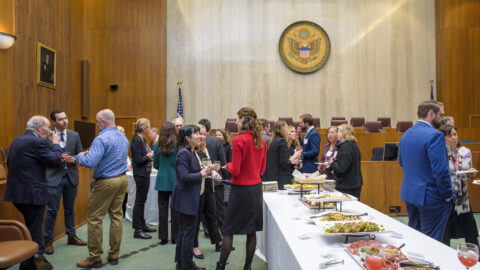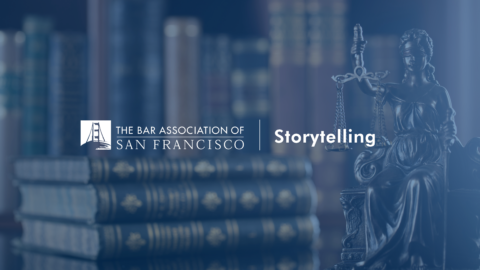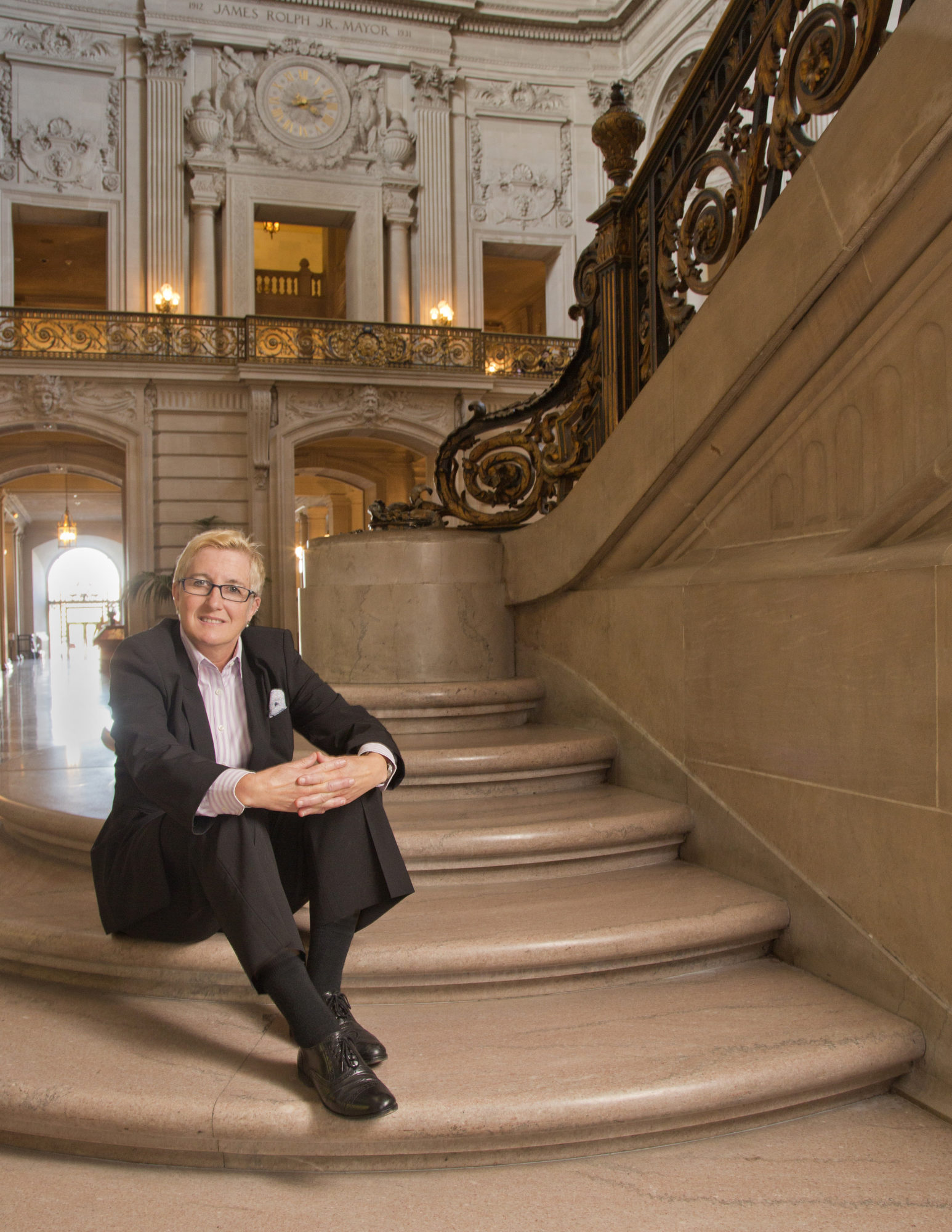
Growing up, San Francisco native Justice Therese Stewart never imagined she would one day lead the city in its legal battles for marriage equality. Nor did she know that in 1999, she would serve as the first openly gay president of the Bar Association of San Francisco (BASF).Stewart, who sits on California’s First District Court of Appeal, graduated from UC Berkeley School of Law in 1981. When she enrolled, Stewart wanted to be an environmental lawyer. Her frequent childhood backpacking trips with her dad and siblings made her care about the environment.
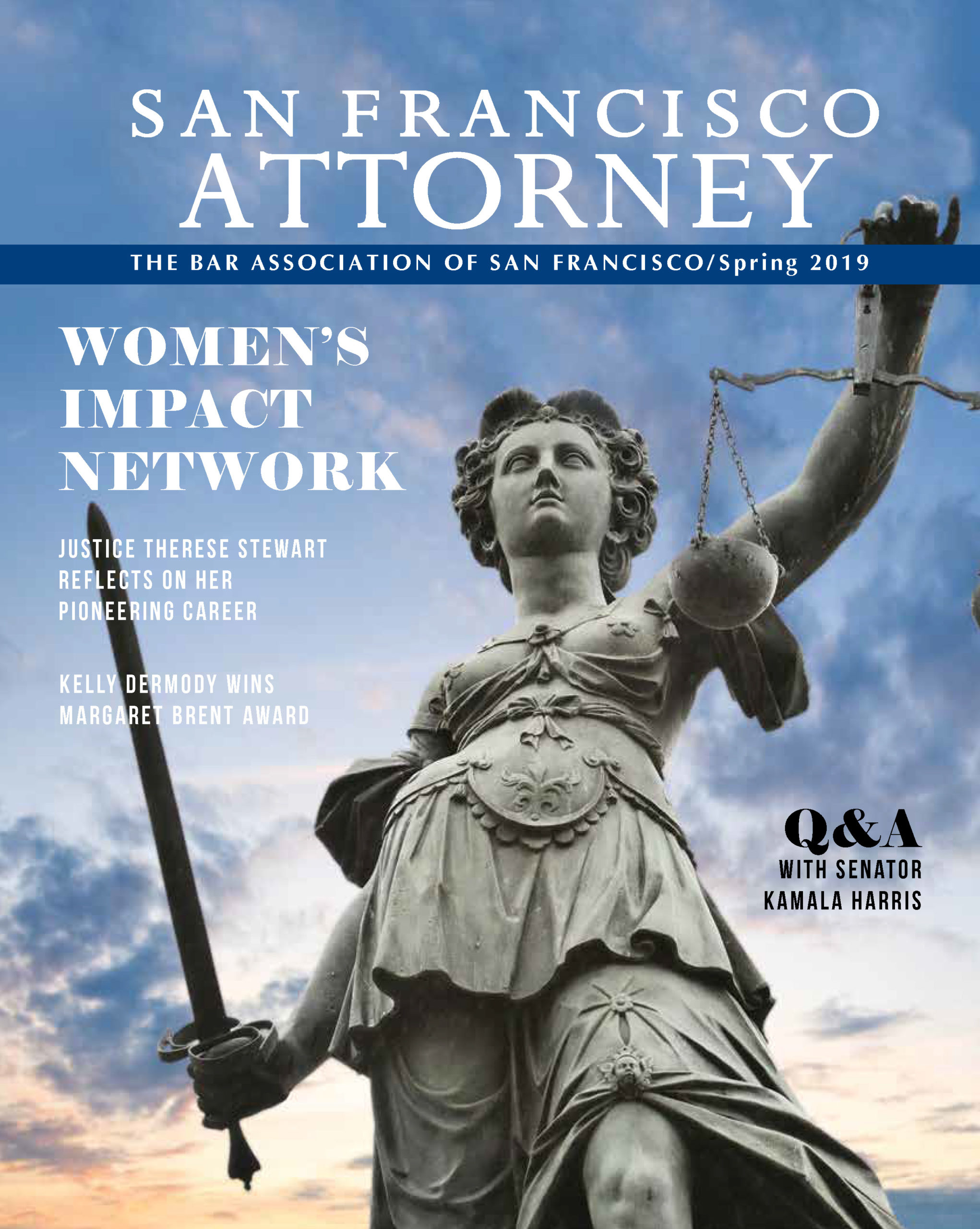
During law school, Stewart served as editor-in-chief of Ecology Law Quarterly, Berkeley’s environmental law journal. Through this work, she realized environmental law is largely administrative. She had already discovered in college that environmental studies could be dry when she learned about such technical topics as nuclear waste repositories.
While the journal reinforced Stewart’s short-on-thrills view of environmental advocacy, she was taking a criminal trial practice class. Stewart found she liked litigation, particularly developing trial strategies.
“A lot of people think how you litigate doesn’t impact winning or losing,” she says. “That wasn’t my experience.”
Stewart says she was raised in San Francisco’s Castro District—“which is apt, I suppose”—and at 24th and Dolores streets, in what is now considered Noe Valley, known then as St. James Parish. “There were lots of Mexican Americans and Irish Americans,” she says. “It was ethnically diverse, from that standpoint.”
Stewart did not hail from a family of lawyers. In their working years, her mom was a nurse and her dad an accountant.
On Women in the Legal Profession
Women’s position in the legal profession is changing, Stewart says, “in some ways more than I expected, and in other ways, not nearly as much as I would have hoped.
“Most women still do everything at home,” she explains, from raising children to managing households. Stewart believes many law firms are better now about recognizing the need for balance between work and home than they once were. But she points out that some do that for women only, perpetuating domestic inequality.
“Pay for women is still way, way behind,” Stewart says, and adds that the statistics for women moving up in the partnership ranks are bleak.
Still, Stewart notes that roles for women have dramatically improved. She says Jerry Brown, California’s immediate past governor, was the first California governor to put a significant number of women on the court, during his first tenure in the late ‘70s. “And he’s done a lot more this time around.”
Stewart was the first open lesbian appointed to the California Court of Appeal. She notes that California courts are more diverse than they have historically been, using Judge Roger Chan—an openly gay, Korean-American judge—as an example. Chan, whom Brown appointed in 2016, presides over family court trials in the San Francisco Superior Court.
But there have been no appointments of transgender people, Stewart adds. There is one transgender judge in California: Victoria Kolakowski in the Alameda County Superior Court. But Kolakowski ran and was elected; she was not seated by gubernatorial appointment.
In her private practice years, when Stewart was coming up for partner at Howard Rice, the partners told her she looked too young. So Stewart studied how women in her firm used their wardrobes to integrate their dual identities of person and lawyer. She emulated their “‘dress like a girl’ outfits,” she says. “Then once I became partner, I ditched all that.”
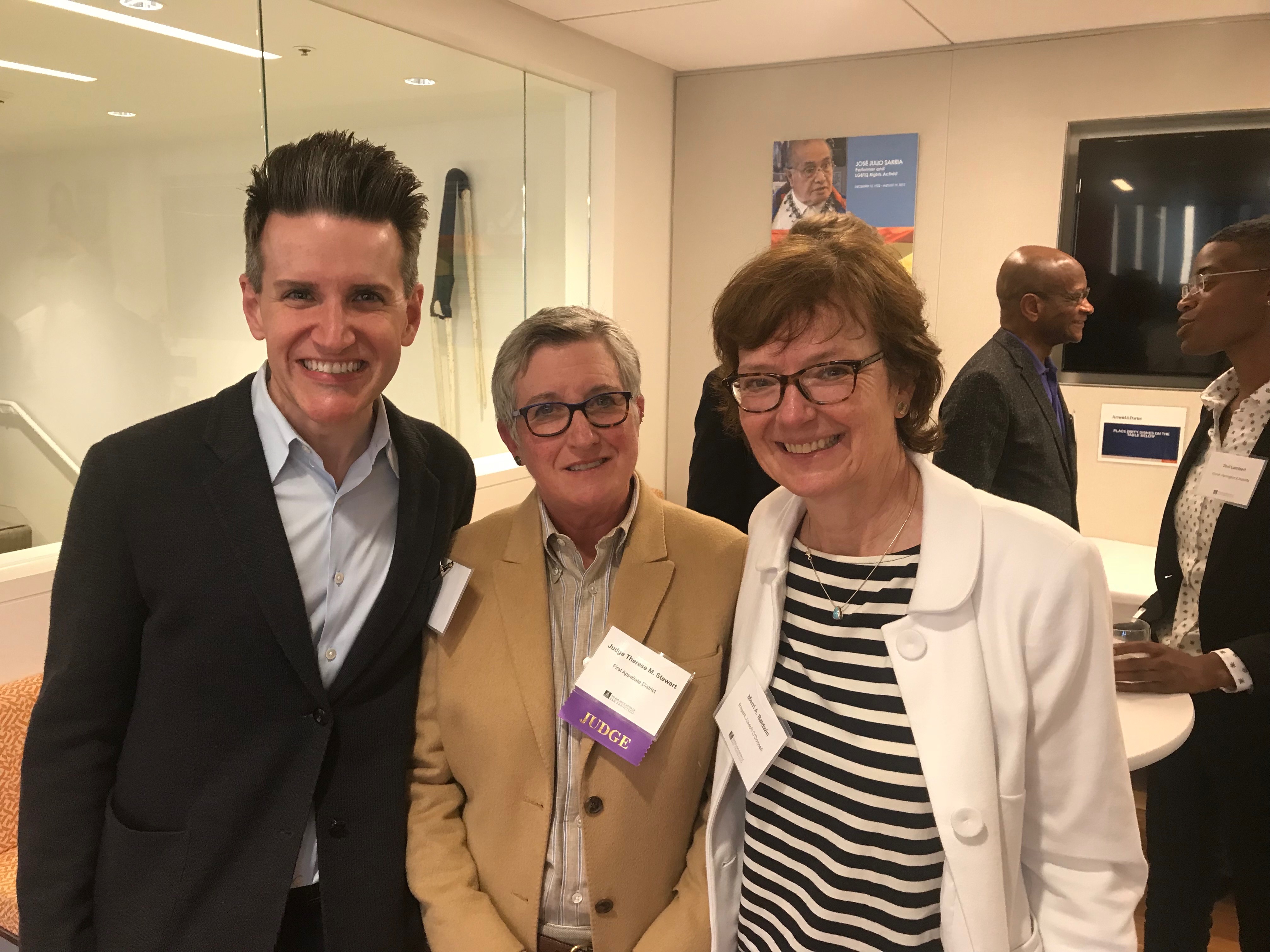
Stewart says she did not encounter any adversity as BASF president. She was the fourth female president, and she did not feel particularly marginalized for holding that distinction, either. In the ‘90s, Stewart climbed up the BASF Board ladder. She initially became active in BASF, at the request of the Bay Area Lawyers for Individual Freedom (BALIF) Board, to insert LGBT rights into a BASF committee for minority hiring in San Francisco law firms and legal organizations.
When Stewart raised the question of LGBT rights in minority hiring, the committee hesitated, feeling that taking on LGBT issues would dilute the committee’s focus on racial minority hiring, which received too little attention as it was. Stewart says she can understand that sentiment.
“You’re already in the club if you’re white,” she explains. “You’re assumed to be smart if you’re white, until proven otherwise. It’s the reverse with some racial minority groups.” According to Stewart, her fellow committee members told her that when a black person walked around San Francisco, everyone knew that person was black; but that when Stewart walked around San Francisco, people didn’t know she was gay.
“I beg to differ,” Stewart jokes, suggesting that her appearance conforms to a stereotype. Beyond the joke, she understood what she saw as a great urgency for the legal profession to hire and promote more racial minorities. Two or three years later, BASF created an LGBT committee similar to the minority hiring one.
Litigating the Same-Sex Marriage Case
San Francisco was at the forefront of LGBT policy long before Stewart arrived at the City Attorney’s Office in 2002, she says. There was already a municipal ordinance requiring any entity wishing to do business with San Francisco to provide domestic partnership benefits.
At the City Attorney’s Office, Stewart handled both trial and appellate work. And because she was the chief deputy city attorney when then-Mayor Gavin Newsom issued 4,000 marriage licenses to same-sex couples in 2004, Stewart led the city’s defense of Newsom when then-California Attorney General Bill Lockyer sued the city to stop the same-sex marriages.
The California Supreme Court declined to decide the issue of marriage equality on its merits but instead considered only whether the City and County of San Francisco had violated then-existing laws prohibiting the issuance of marriage licenses to same-sex couples.
Stewart drafted a brief defending Newsom’s actions as not unlawful. But in August 2004, the California Supreme Court found that Newsom had violated then-existing marriage statutes. “I persuaded myself by the time I argued it … but I didn’t persuade any of them,” Stewart quipped.
Though it had ordered San Francisco officials to stop issuing marriage licenses to same-sex couples, the court invited the local government to challenge the constitutionality of the marriage laws.
San Francisco took up the mantle, and in 2005, San Francisco Superior Court Judge Richard Kramer ruled that denying same-sex couples the freedom to marry discriminates based on gender and violates the state constitution’s equal protection guarantees. In 2006, the Court of Appeal reversed Kramer’s decision.
Stewart argued the case at the California Supreme Court in 2008, along with Shannon Minter of the National Center for Legal Rights (NCLR) and Gloria Allred’s office, among others. Chief Justice Ronald M. George, writing for the majority, reversed the appellate decision and found for the City and County, holding that marriage is a basic civil right, and that state law excluding same-sex couples from marriage discriminates based on sexual orientation, in violation of California’s equal protection clause.
Stewart suspects that if the California Supreme Court had taken the case on its merits in 2004, San Francisco would have lost. AB 205, the bill proposing that California registered domestic partners should gain all the statewide rights and responsibilities of married couples, did not take effect until January 2005. Stewart doubts the state Supreme Court would have been ready to implement marriage equality before other legal steps toward equality had taken hold.
Throughout her years as a practicing attorney, Stewart considered a judicial career “on and off,” especially while she clerked with Eleventh Circuit Judge Phyllis A. Kravitch. In the 1990s, Stewart applied to be a district court judge or magistrate. When that effort didn’t succeed, she says, “I forgot about it because I was having too much fun litigating.”
Stewart took the bench in 2014. California Appellate Justice Anthony Kline, whose written dissent in the 2006 case had favored San Francisco, encouraged Stewart to apply for a bench seat. Though Stewart and Kline had taken the city’s side for different reasons—Stewart based on equal protection as to sexual orientation, and Kline based on privacy and autonomy—they shared a collegial relationship based on mutual respect.
Thinking through her options for a judicial seat, Stewart knew a federal judgeship was out of reach after the marriage cases. She has no regrets, and says, “I’m not going to make my career about the next phase when I could be dead tomorrow.”
As an Agent for Change in the Community
Stewart’s proudest accomplishment from her BASF tenure is the School-to-College Program she co-founded in the ‘90s, to help San Francisco’s kids of color go to college through mentoring relationships.
Stewart applauds BASF’s community focus, particularly since Tanya Neiman launched the Volunteer Legal Services Program, now called the Justice and Diversity Center (JDC), which provides legal assistance and support to people in San Francisco who could not otherwise afford it.
Of her generational ties to San Francisco and her remarkable community involvement, Stewart says she’d be unhappy if she were only in her own world and not involved in broader issues. “I feel like I am of and for the city. I am a third generation San Franciscan.”
Stewart continues to live in the city with her wife, Carole Scagnetti, a managing attorney with Johnston, Kinney & Zulaica. Their daughter, raised a fourth-generation San Franciscan, spent her college and graduate school years on the east coast, but has since returned to San Francisco.
Her Role as a Judge
For Stewart, the most surprising aspect of being a judge is finding the balance between getting the work done and diving into legal research. She is not precluded from looking for a more relevant case than those the attorneys present to her, and she loves legal research.
The Court of Appeal has a heavy criminal docket. “(Criminal law is) hugely important,” Stewart says. “I am privileged and honored to work on it.” Stewart adds, “We are the court of last resort for ninety-nine percent of all cases, since the Supreme Court reserves (its jurisdiction) for cases raising issues of statewide importance. Our job, which we take very seriously, is to give the litigants a fair second look.”
About the author:
Katie Burke owns Burke Family Law in San Francisco. Katie has practiced family law in San Francisco for thirteen years, representing individuals in their divorce, child custody, and financial division matters. She also helps people secure domestic violence restraining orders; drafts and reviews premarital agreements, post-marital agreements, and cohabitation agreements; and handles probate guardianships and civil and family law appeals.


